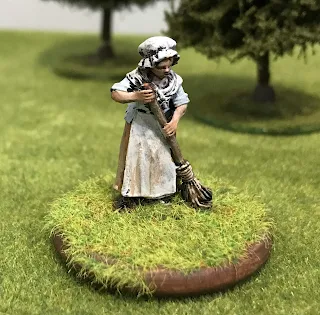The Battle of Stony Point was a exciting but forgotten battle of the American Rev War. A little midnight July 16, 1779, the American Corps of Light Infantry overran the British position at Stony Point on the Hudson River. In twenty-five minutes American forces captured over 500 British troops, fifteen artillery pieces, and over 100,000 continental dollars’ worth of goods. It was a victory celebrated at the time and made General Anthony Wayne's reputation. But today few but enthusiastic buffs know about it. Sadley, fewer have taken the time to write about. But those that have have done outstanding works and include Don Loprieno’s The Enterprise in Contemplation: The Midnight Assault on Stony Point, and Henry P. Johnston’s The Storming of Stony Point on the Hudson. Because these are difficult to find books the reading public has had a difficult time finding good material to learn about this fascinating battle. "Men Who Are Determined to be Free" corrects this and provides the reader with a handy reference to this battle.
The author begins his coverage of the by describing the strategic situation in 1778. While this may feel somewhat unnecessary to some. I think it relates the battle to the time and explains why both sides operated as they did. It explains the creation and development of the American Corp of Light Infantry. It also tells the tale of how Anthony Wayne was picked for the assignment, and why he may have been the most experienced man for the job. Lastly it explains the strategic and operational constraints that Sir Henry Clinton and the British were under. Already the French alliance with America was hovering a effect. British troops were being striped away for operations elsewhere and Clinton just did not have the manpower sir William Howe once had. Not did he have Howe's operational freedom.
The book contains a good amount of pictures, including many of the modern battlefield. Throughout the book the reader can follow operations by the numerous maps. Unlike many military history books this one does contain many useful ones. Both the author and the publisher should be transistor this.
Lastly, the book is a very good read and full of ideas for a miniature battle. The details of night fighting and the confusion it causes is discussed. How to translate this to the table top is another matter and one I have been working on for Refighting Lundy's Lane.
The author begins his coverage of the by describing the strategic situation in 1778. While this may feel somewhat unnecessary to some. I think it relates the battle to the time and explains why both sides operated as they did. It explains the creation and development of the American Corp of Light Infantry. It also tells the tale of how Anthony Wayne was picked for the assignment, and why he may have been the most experienced man for the job. Lastly it explains the strategic and operational constraints that Sir Henry Clinton and the British were under. Already the French alliance with America was hovering a effect. British troops were being striped away for operations elsewhere and Clinton just did not have the manpower sir William Howe once had. Not did he have Howe's operational freedom.
The book contains a good amount of pictures, including many of the modern battlefield. Throughout the book the reader can follow operations by the numerous maps. Unlike many military history books this one does contain many useful ones. Both the author and the publisher should be transistor this.
Lastly, the book is a very good read and full of ideas for a miniature battle. The details of night fighting and the confusion it causes is discussed. How to translate this to the table top is another matter and one I have been working on for Refighting Lundy's Lane.










































